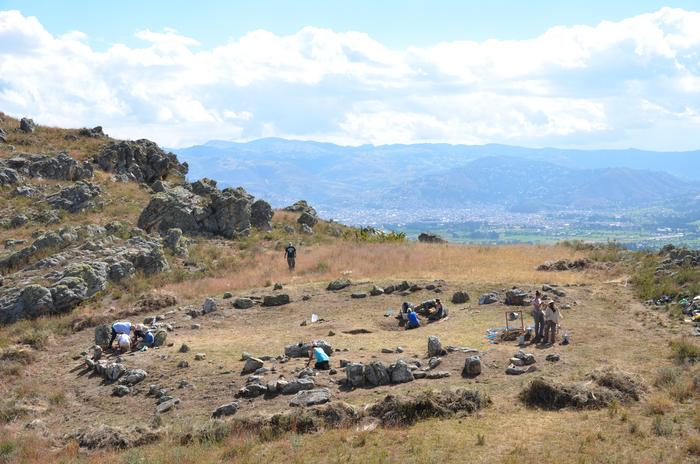An ancient ceremonial megalith dated to 4,750 years ago has been discovered in the Peruvian Andes. The find is older than the Great Pyramids of Egypt and represents one of the oldest circular plazas in the region.
Unearthed at an archaeological site called Callacpuma in northern Peru’s Cajamarca valley, the plaza measures around 18 meters (60 feet) across and features concentric walls of large, free-standing, vertically placed megalithic stones, the likes of which have never been seen before in the Andes.
Having been the subject of archaeological interest for nearly 60 years, the site has now been excavated and subjected to radiocarbon dating, placing its construction between 2632 and 2884 BCE, during the Late Preceramic period. This dating makes the plaza one of the earliest examples of monumental, megalithic architecture in the Americas.
“This structure was built approximately 100 years before the Great Pyramids of Egypt and around the same time as Stonehenge,” Associate Professor Jason Toohey, who led the project, said in a statement.
As well as Stonehenge, other famous megaliths, constructed using large stones placed upright with no mortar, include Göbekli Tepe – the world’s oldest megalithic site – as well as its lesser-known “sister site” Karahan Tepe.

The Callacpuma plaza measures around 18 meters (60 feet) in diameter and was built using a construction method previously unseen in the Andes.
Image credit: Jason Toohey
The Andean megalith, archaeologists believe, probably had a ceremonial function and continued to be used as a ritual space, at least periodically, through the Initial period (1800 BCE-900 BCE) and Early Horizon (900-200 BCE).
“It was probably a gathering place and ceremonial location for some of the earliest people living in this part of the Cajamarca Valley,” Toohey explained. “These people were living a primarily hunting-and-gathering lifestyle and probably had only recently begun growing crops and domesticating animals.”
The Late Preceramic period, during which the plaza at Callacpuma was built, “was a time of socioeconomic transition in the Andes,” the study authors write. People on the central coast exchanged fish, while communities inland grew some food and industrial crops, and in the northern highlands those who built the plaza “may have begun to experiment with food production” while still largely foraging for food.
The discovery, the team writes, represents “a shifting social world” and is “a critical early example of collective construction, place building, and social integration among people in the Andes.”
The study is published in the journal Science Advances.
Source Link: Ancient 4,750-Year-Old Megalith Discovered On Peruvian Mountain